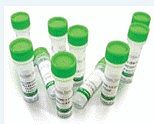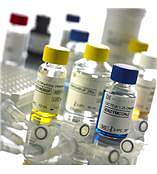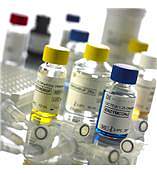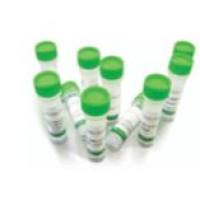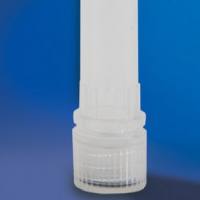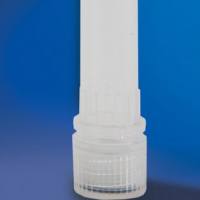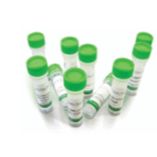
产品详情
文献和实验
相关推荐
库存 :146002
靶点 :NK细胞抑制剂抗体
目录编号 :146002
克隆性 :多克隆
抗体英文名 :Ultra-LEAF™ Purified anti-Asialo-GM1
抗体名 :NK细胞抑制剂抗体
宿主 :Rabbit Polyclonal IgG
适应物种 :大小鼠
应用范围 :FC
浓度 :Ultra-LEAF™ Purified anti-Asialo-GM1
规格 :1ml
NK细胞抑制剂抗体,Ultra-LEAF™ Purified anti-Asialo-GM1- Clone
- Poly21460 (See other available formats)
- Regulatory Status
- RUO
- Other Names
- Ganglioside, GM1, ganglio-N-tetraosylceramide
- Isotype
-
Rabbit Polyclonal IgG
Pricing & Availability
- Clone
- Poly21460 (See other available formats)
- Regulatory Status
- RUO
- Other Names
- Ganglioside, GM1, ganglio-N-tetraosylceramide
- Isotype
- Rabbit Polyclonal IgG
- Ave. Rating
- Submit a Review
- Product Citations
- 11 publications
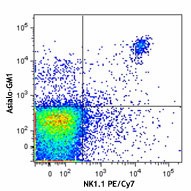 C57BL/6 mouse splenocytes were stained with Ultra-LEAF™ purified anti-Asialo-GM1 (clone Poly21460), followed by anti-rabbit IgG FITC and NK1.1 PE/Cy7.
Compare all formats
C57BL/6 mouse splenocytes were stained with Ultra-LEAF™ purified anti-Asialo-GM1 (clone Poly21460), followed by anti-rabbit IgG FITC and NK1.1 PE/Cy7.
Compare all formatsCat # Size Price Quantity Check Availability Save 146002 1 ml (reconstituted) DescriptionGM1 is a ganglioside, a type of glycosphingolipid with a single sialic acid group. Asialo-GM1 is a GM1 derivative without a sialic acid group. It is expressed on NK cells, basophils, monocytes/macrophages, and T cells. It is particularly expressed on very early thymocytes, but the expression decreases as the cells mature and become Thy-1+. The highest expression is detected on neuronal tissues. This molecule has been shown to be involved in microbial pathogenesis. Antibodies specific for Asialo-GM1 are elevated in dementia, lupus, and Guillain-Barré syndrome.
- Reactivity
- Mouse, Rat
- Antibody Type
- Polyclonal
- Host Species
- Rabbit
- Immunogen
- Asialo-GM1
- Formulation
- Lyophilized powder. Endotoxin level is <0.01 EU/µg of the protein (<0.001 ng/µg of the protein) as determined by the LAL test.
- Preparation
- Reconstitute with 1 ml sterile deionized, distilled, endotoxin-free water. Gamma globulin fraction of serum was precipitated using 50% ammonium sulfate followed by dialysis with phosphate buffered saline.
- Concentration
- Lot-specific (to obtain lot-specific concentration, please enter the lot number in our Concentration and Expiration Lookup or Certificate of Analysis online tools.)
- Storage & Handling
- The antibody solution should be stored undiluted between 2°C and 8°C. This Ultra-LEAF™ solution contains no preservative; handle under aseptic conditions.
- Application
-
FC - Quality tested
Depletion - Reported in the literature, not verified in house - Recommended Usage
-
Each lot of this antibody is quality control tested by immunofluorescent staining with flow cytometric analysis. Optimal staining for flow cytometry may vary from lot-to-lot. This antibody has been reported to deplete NK cells in vivo. A usage of 50 µl per mouse is recommended, but optimal usage will vary depending on the strain of mouse and experimental conditions2-4. It is recommended that the reagent be titrated for optimal performance for each application.
- Application Notes
-
This antibody recognizes asialo-GM1. It does not react with other glycolipids, such as GM1 and Asialo-GM2.
This antibody can partially block IL-12 induced IFN-? production but does not affect other systemic action of IL-12.
This product may contain other non-IgG subtypes. -
Application References
(PubMed link indicates BioLegend citation) -
- Naiki M, et al. 1974. J. Immunol. 113:84.
- Kasai M, et al. 1981. Nature. 291:334. (Depletion)
- Nishikado H, et al. 2011. J. Immunol. 186:5766. (Depletion)
- Zhou G, et al. 2013. Eur. J. Immunol. 43:929. (Depletion)
- Product Citations
-
- RRID
- AB_2562206 (BioLegend Cat. No. 146002)
Antigen Details
- Structure
- Asialo-GM1 is a GM1 derivative without a sialic acid group, with the structure: βDGalp(1-3)βDGalpNAc(1-4)βDGalp(1-4)βDGlcp(1-1)Cer
- Distribution
-
NK cells, basophils, splenic T lymphocytes, highest concentrations on neurons
- Function
- Supports cellular identification, neuronal plasticity, and repair mechanisms
- Interaction
- Facilitates cellular recognition and cell-to-cell communication
- Ligand/Receptor
- Ligand for cholera toxin
- Cell Type
- Basophils, Neurons, NK cells, T cells
- Biology Area
- Cell Biology, Immunology, Innate Immunity, Signal Transduction
- Antigen References
-
1. Stein-Douglas K, et al. 1979. J. Exp. Med. 143:822.
2. Kasai M, et al. 1980. Eur. J. Immunol. 10:175.
3. Young WW Jr, et al. 1980. J. Immunol. 124:199.
4. Bansal AS, et al. 1994. J. Clin. Path. 47:300. - Gene ID
-
NA
Pricing & Availability
- Clone
- Poly21460 (See other available formats)
- Regulatory Status
- RUO
- Other Names
- Ganglioside, GM1, ganglio-N-tetraosylceramide
- Isotype
- Rabbit Polyclonal IgG
- Ave. Rating
- Submit a Review
- Product Citations
- 11 publications
 C57BL/6 mouse splenocytes were stained with Ultra-LEAF™ purified anti-Asialo-GM1 (clone Poly21460), followed by anti-rabbit IgG FITC and NK1.1 PE/Cy7.
Compare all formats
C57BL/6 mouse splenocytes were stained with Ultra-LEAF™ purified anti-Asialo-GM1 (clone Poly21460), followed by anti-rabbit IgG FITC and NK1.1 PE/Cy7.
Compare all formatsCat # Size Price Quantity Check Availability Save 146002 1 ml (reconstituted) $485.00 DescriptionGM1 is a ganglioside, a type of glycosphingolipid with a single sialic acid group. Asialo-GM1 is a GM1 derivative without a sialic acid group. It is expressed on NK cells, basophils, monocytes/macrophages, and T cells. It is particularly expressed on very early thymocytes, but the expression decreases as the cells mature and become Thy-1+. The highest expression is detected on neuronal tissues. This molecule has been shown to be involved in microbial pathogenesis. Antibodies specific for Asialo-GM1 are elevated in dementia, lupus, and Guillain-Barré syndrome.
Product DetailsProduct Details
- Reactivity
- Mouse, Rat
- Antibody Type
- Polyclonal
- Host Species
- Rabbit
- Immunogen
- Asialo-GM1
- Formulation
- Lyophilized powder. Endotoxin level is <0.01 EU/µg of the protein (<0.001 ng/µg of the protein) as determined by the LAL test.
- Preparation
- Reconstitute with 1 ml sterile deionized, distilled, endotoxin-free water. Gamma globulin fraction of serum was precipitated using 50% ammonium sulfate followed by dialysis with phosphate buffered saline.
- Concentration
- Lot-specific (to obtain lot-specific concentration, please enter the lot number in our Concentration and Expiration Lookup or Certificate of Analysis online tools.)
- Storage & Handling
- The antibody solution should be stored undiluted between 2°C and 8°C. This Ultra-LEAF™ solution contains no preservative; handle under aseptic conditions.
- Application
-
FC - Quality tested
Depletion - Reported in the literature, not verified in house - Recommended Usage
-
Each lot of this antibody is quality control tested by immunofluorescent staining with flow cytometric analysis. Optimal staining for flow cytometry may vary from lot-to-lot. This antibody has been reported to deplete NK cells in vivo. A usage of 50 µl per mouse is recommended, but optimal usage will vary depending on the strain of mouse and experimental conditions2-4. It is recommended that the reagent be titrated for optimal performance for each application.
- Application Notes
-
This antibody recognizes asialo-GM1. It does not react with other glycolipids, such as GM1 and Asialo-GM2.
This antibody can partially block IL-12 induced IFN-? production but does not affect other systemic action of IL-12.
This product may contain other non-IgG subtypes. -
Application References
(PubMed link indicates BioLegend citation) -
- Naiki M, et al. 1974. J. Immunol. 113:84.
- Kasai M, et al. 1981. Nature. 291:334. (Depletion)
- Nishikado H, et al. 2011. J. Immunol. 186:5766. (Depletion)
- Zhou G, et al. 2013. Eur. J. Immunol. 43:929. (Depletion)
- Product Citations
-
- RRID
- AB_2562206 (BioLegend Cat. No. 146002)
Antigen Details
- Structure
- Asialo-GM1 is a GM1 derivative without a sialic acid group, with the structure: βDGalp(1-3)βDGalpNAc(1-4)βDGalp(1-4)βDGlcp(1-1)Cer
- Distribution
-
NK cells, basophils, splenic T lymphocytes, highest concentrations on neurons
- Function
- Supports cellular identification, neuronal plasticity, and repair mechanisms
- Interaction
- Facilitates cellular recognition and cell-to-cell communication
- Ligand/Receptor
- Ligand for cholera toxin
- Cell Type
- Basophils, Neurons, NK cells, T cells
- Biology Area
- Cell Biology, Immunology, Innate Immunity, Signal Transduction
- Antigen References
-
1. Stein-Douglas K, et al. 1979. J. Exp. Med. 143:822.
2. Kasai M, et al. 1980. Eur. J. Immunol. 10:175.
3. Young WW Jr, et al. 1980. J. Immunol. 124:199.
4. Bansal AS, et al. 1994. J. Clin. Path. 47:300. - Gene ID
- NA
- UniProt
- View information about Asialo-GM1 on UniProt.org
Related Products
Description Clone Applications Cell Staining Buffer FC, ICC, ICFC RBC Lysis Buffer (10X) FC, ICFC TruStain FcX™ PLUS (anti-mouse CD16/32) S17011E FC

上海研卉生物科技有限公司
实名认证
金牌会员
入驻年限:10年



